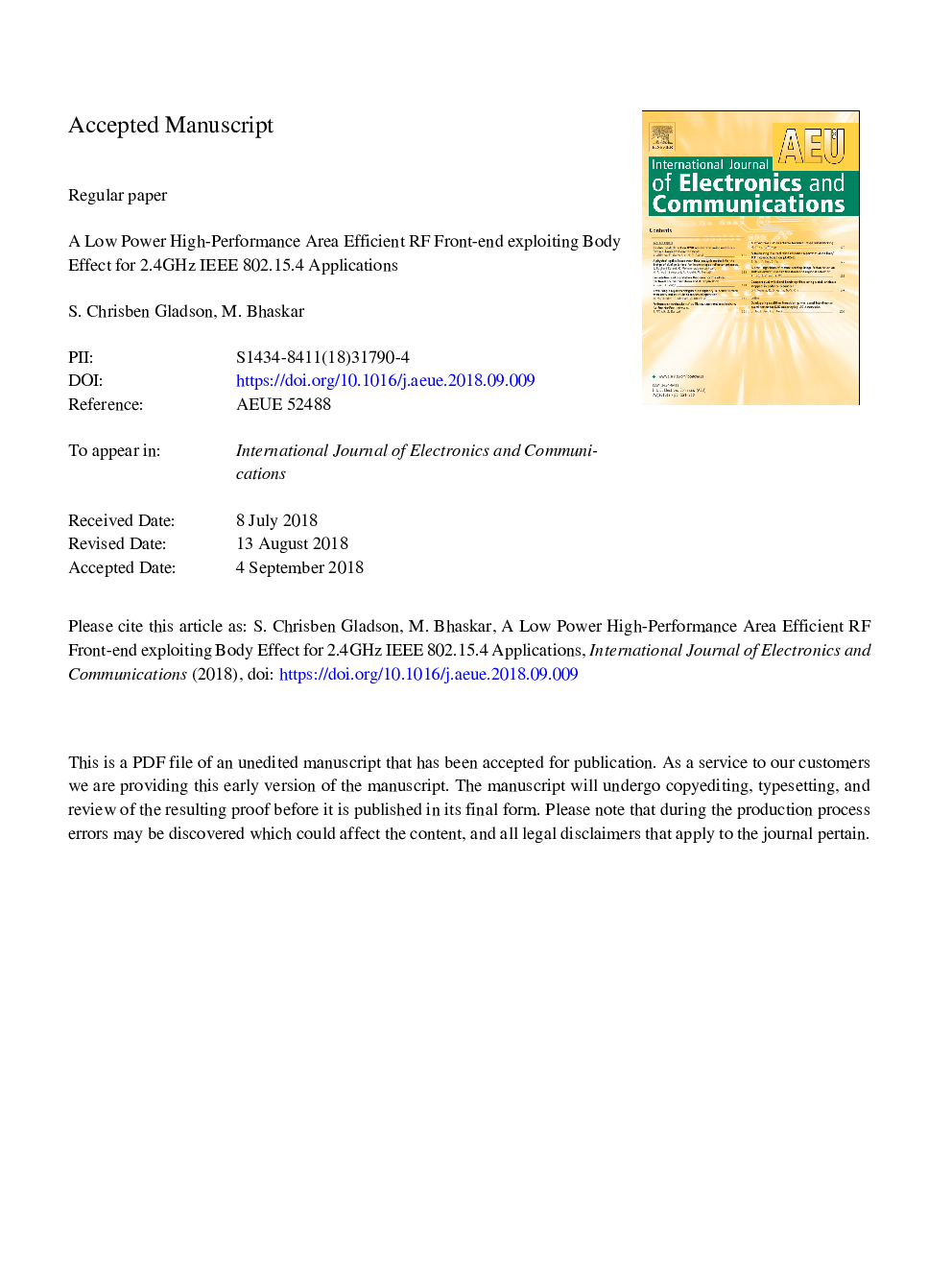| کد مقاله | کد نشریه | سال انتشار | مقاله انگلیسی | نسخه تمام متن |
|---|---|---|---|---|
| 11028106 | 1666113 | 2018 | 29 صفحه PDF | دانلود رایگان |
عنوان انگلیسی مقاله ISI
A low power high-performance area efficient RF front-end exploiting body effect for 2.4â¯GHz IEEE 802.15.4 applications
دانلود مقاله + سفارش ترجمه
دانلود مقاله ISI انگلیسی
رایگان برای ایرانیان
کلمات کلیدی
IoTLNAZigBeeInductorlessIIP3WPANConversion gain - افزایش تبدیلDown-conversion - تبدیل به پایینLinearity - رابطه خطی، خطی بودنCommunication systems - سیستم های ارتباطیCMOS - سیماس یا نیمرسانای اکسید فلزی مکمل Noise Figure - شکل سر و صداDynamic range - محدوده دینامیکیMixer - میکسرWireless - وایرلس، بی سیم
موضوعات مرتبط
مهندسی و علوم پایه
مهندسی کامپیوتر
شبکه های کامپیوتری و ارتباطات
پیش نمایش صفحه اول مقاله

چکیده انگلیسی
The rising internet-of-things applications in home automation, smart wearables, healthcare monitoring demand small, area efficient, high-performance and low power radio frequency (RF) blocks for effective short-range communication. This growing market demand is addressed in this paper by proposing a fully CMOS radio frequency front-end (RFE) exploiting bulk effect. Apart from the primary function of frequency translation, proper circuit performance concerning the linearity, conversion gain, and noise figure is required for low-cost densely integrated transceivers operating in the 2.4â¯GHz ISM band. The proposed RFE at 2.4â¯GHz is designed and implemented in UMC 180â¯nm CMOS process technology with two modes of operation. In high gain mode (Mode-I), the post-layout simulation with SpectreRF shows a peak gain of 30.06â¯dB, IIP2 at 64.52â¯dBm, IIP3 at â2.74â¯dBm and a DSB-NF of 7.68â¯dB while consuming only 9.24â¯mW from the 1.8â¯V supply. In the high linear mode (Mode-II), the RFE achieves a higher IIP3 of 10.78â¯dBm, IIP2 of 91.56â¯dBm, the conversion gain of 23.5â¯dB, DSB-NF of 9.46â¯dB while consuming a low power of 3.6â¯mW. The fully CMOS circuit occupies a core area of only 0.0021â¯mm2. The proposed front-end exhibits a spurious free dynamic range (SFDR) of 81.18â¯dB ensuring the high dynamic operation of the wireless system.
ناشر
Database: Elsevier - ScienceDirect (ساینس دایرکت)
Journal: AEU - International Journal of Electronics and Communications - Volume 96, November 2018, Pages 81-92
Journal: AEU - International Journal of Electronics and Communications - Volume 96, November 2018, Pages 81-92
نویسندگان
S. Chrisben Gladson, M. Bhaskar,